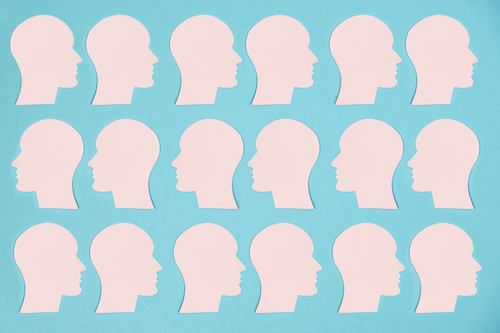This post on accommodating invisible disabilities originally appeared on CoSN’s blog and is reposted here with permission.
Key points:
There are accommodation challenges in areas such as technology and infrastructure
DEI in action: eSN Innovation Roundtable
How your school’s design can promote equity through access
For more news on DEI, visit eSN’s Educational Leadership hub
The concept of accessibility for individuals with disabilities has been an evolving journey, significantly propelled by landmark legislation such as the Americans with Disabilities Act (ADA). Enacted over three decades ago, the ADA has catalyzed a transformative shift towards creating more inclusive spaces and opportunities, ensuring that people with disabilities can navigate and access public spaces, employment, and services on an equal footing with others. However, despite these advancements, the journey towards full accessibility is ongoing. Challenges remain in areas such as technology, infrastructure, and societal attitudes, underscoring the need for continuous efforts and innovations to break down barriers and foster a genuinely accessible world for everyone.
First importantly, it is imperative to know that those with disabilities are not disabled. In fact, there are no people who are “disabled,” but there are people with disabilities. It is very important to know that the disability a person may have does not define who they are – those with epilepsy aren’t “epileptics,” for example. People in chairs have disabilities; they aren’t disabled. Having a disability, then, doesn’t define anyone as being disabled.
But what we don’t talk a lot about, in terms of access and protections for those with disabilities, are the more subtle, non-apparent disabilities that affect many people that aren’t addressed by the efforts to provide access to public spaces, at least to this point. According to the Invisible Disabilities Association, 26 million Americans have a severe disability, while only 1.8 million use a chair, and 5.2 million use a cane, crutches, or walkers. This is not, of course, to discount those who use those devices but rather to illustrate the prevalence of disabilities that aren’t apparent to the naked eye. Of the 61 million people that the CDC identifies as having a disability of some kind, 10% of those are people with disabilities that are invisible or offer no evidence of their presence through visual clues.
One of these is PTSD, a focus area given the epidemic of PTSD among active and retired military personnel. According to the USO, over 30,000 active duty and veterans have died by suicide since 2001. 519 active-duty personnel died by suicide in 2022 alone, according to the Department of Defense. Clearly, PTSD is a silent, invisible malady that has been responsible, according to the USO, for more deaths in service members than actual battlefield fatalities.
The ADA also recognizes people with major depressive disorders among those that have disabilities or depression that “substantially limit one or more major life activities,” as defined by the ADA. Not all of these limits can be considered as being visible. For example, one’s productivity, accuracy, and other job-related metrics can be affected by major depressive disorders. Still, these metrics can manifest themselves, to employers and others, as simply an inability to perform job functions. Thus, the disability, if not disclosed, can result in reasons for discipline, termination, and other workplace problems. Given the stigma that is still associated, for some, with problems that are related to mental health, some may not come forward to an employer and specifically request accommodations.
Another form of invisible disability is a neurological problem, epilepsy. According to the National Institutes of Health, temporal lobe epilepsy is the most common seizure disorder, affecting roughly fifty million people worldwide. Roughly 90 percent of these cases manifest in Focal Impaired Seizures, or seizures that are almost completely invisible, don’t involve convulsions, and yet involve a total loss of consciousness for those having seizures. Individuals with focal impaired seizures may not even know that they are suffering from seizures at all. Traumatic Brain Injuries can be classed in this category as well, the symptoms of which can also be construed as reasons for misunderstanding a person’s behaviors in the workplace and society at large.
The Invisible Disabilities Association puts this succinctly: “Unfortunately, people often judge others by what they see and conclude a person can or cannot do something by the way they look. This attitude can be equally frustrating for those who may appear unable but are perfectly capable and those who seem able but are not.” The key point here is that every disability is different. We can’t judge people as having a disability or not simply using our eyes. None of this is intended, of course, to downplay disabilities that affect some with very visible challenges. Accessibility is, and will continue to be, incredibly important. The point here is that there are invisible disabilities that may be embarrassing for those suffering from them, and thus, in some cases, make those with disabilities disinclined to request accommodations.
The concept of accessibility for individuals with disabilities has been an evolving journey, significantly propelled by landmark legislation such as the Americans with Disabilities Act (ADA). CoSN Corner, DEIA (Diversity, Equity, Inclusion & Access), Educational Leadership, Featured on eSchool News, IT Leadership, challenges, COSN, disabilities, infrastructure, innovation, Technology eSchool News






